About
I came to painting later than most artists.
My formal education was in music (violin and composition), yet after school I found my way into a practical career as a computer programmer.
Painting was always an intense curiosity for me, though.
So, for my 30th birthday, I purchased a small oil painting kit. This weekend hobby took on a life of its own, and after several years I left my comfortable life in technology to pursue this more uncertain – and much more satisfying – path.
I have painted still life exclusively for the last dozen years. I find it to be the perfect synthesis of tradition and exploration, and for me it is the ideal vehicle to search for both the inner and outer light.
I am deeply honored that over 700 collectors have chosen to bring my paintings into their homes, with many of them collecting multiple works.
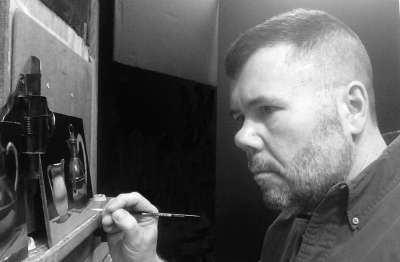
About

I came to painting later than most artists.
My formal education was in music (violin and composition), yet after school I found my way into a practical career as a computer programmer.
Painting was always an intense curiosity for me, though.
So, for my 30th birthday, I purchased a small oil painting kit. This weekend hobby took on a life of its own, and after several years I left my comfortable life in technology to pursue this more uncertain – and much more satisfying – path.
I have painted still life exclusively for the last dozen years. I find it to be the perfect synthesis of tradition and exploration, and for me it is the ideal vehicle to search for both the inner and outer light.
I am deeply honored that over 700 collectors have chosen to bring my paintings into their homes, with many of them collecting multiple works.
The Inspiration
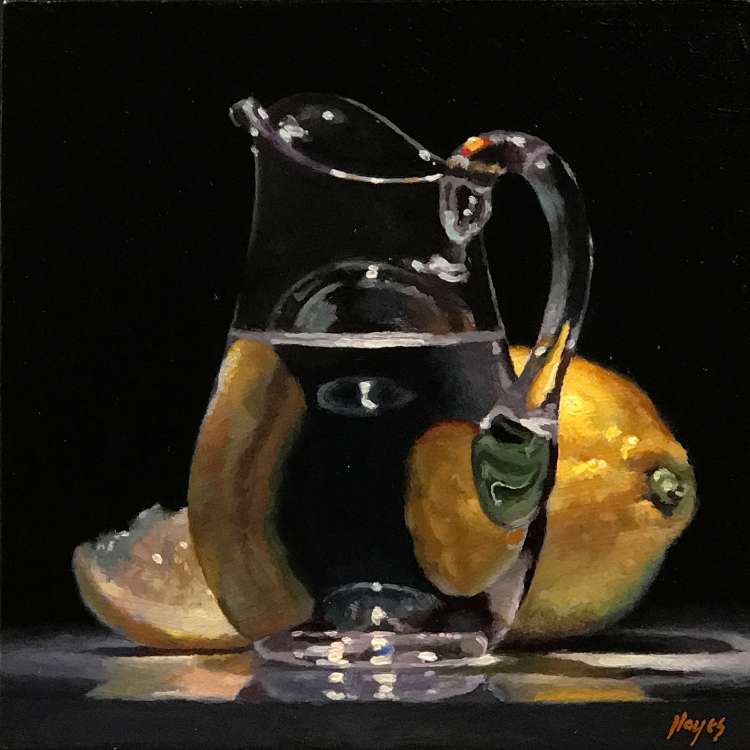
oil on panel, 5×5 inches
These paintings grow out of two sources: On the one hand, a deep love for the great still life tradition of the Dutch Golden Age, and on the other, a life-long interest in meditation.
For both viewer and artist, still life is the perfect opportunity to have that experience which all meditation seems to aim at: complete and total absorption in the present moment. Not the past. Not the future. Just what is in front of you. Right here. Right now.
That moment of quiet, intense connection – that sense of one-ness – is all the inspiration I need… and these paintings emerge from that source.
As such, this isn’t really a personal art. It’s not about me or my views or my ideas.
My role is to step aside, and let these silent moments speak through me.
And there isn’t anything more personal.
The Inspiration

oil on panel, 5×5 inches
These paintings grow out of two sources: On the one hand, a deep love for the great still life tradition of the Dutch Golden Age, and on the other, a life-long interest in meditation.
For both viewer and artist, still life is the perfect opportunity to have that experience which all meditation seems to aim at: complete and total absorption in the present moment. Not the past. Not the future. Just what is in front of you. Right here. Right now.
That moment of quiet, intense connection – that sense of one-ness – is all the inspiration I need… and these paintings emerge from that source.
As such, this isn’t really a personal art. It’s not about me or my views or my ideas.
My role is to step aside, and let these silent moments speak through me.
And there isn’t anything more personal.
The Process
These paintings are created by a process that can take weeks – even months – to complete.
This three stage method – known as the Flemish Technique – has been used by artists for over five centuries to create paintings that can reflect a stunning degree of realism.
First, a drawing is made on the canvas or panel the artist has prepared. This can be a simple outline of forms, but more often contains much of the detail that will be present in the finished painting.
Second, a black and white version is painted over the drawing. Called an underpainting, it allows the artist to understand of the patterns of light and dark as well as create 3-dimensional form – without the complexity of mixing color. In a way, it also serves as a dress rehearsal for the final painting. It must be set aside for a week or two to dry before proceeding.
Finally, a layer of full color is applied on top of the underpainting. This is what you see when looking at a finished painting made in this way.
Even small paintings made using this process can take weeks to complete – longer with larger and more complex paintings. At any given time, there are typically multiple paintings in progress through the three stages.
Once completed, the paintings need additional time to dry – a minimum of one month – before a protective coat of varnish can be applied.
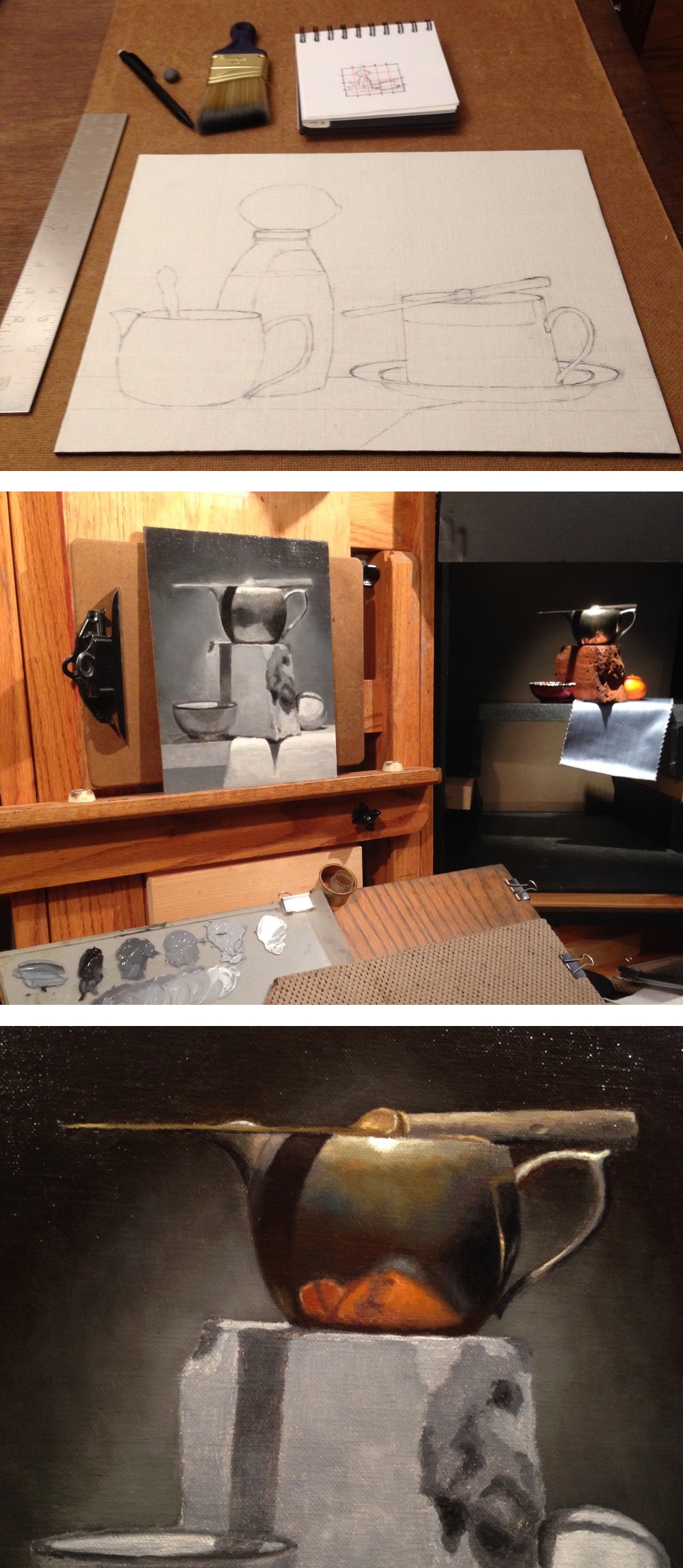
The Process
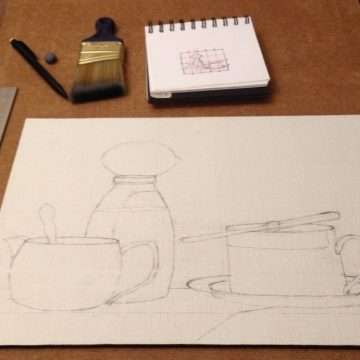
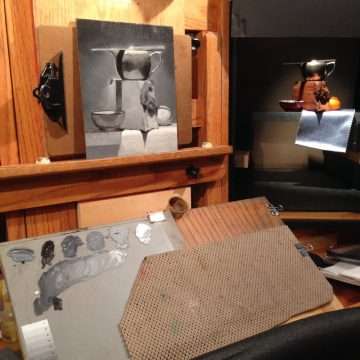
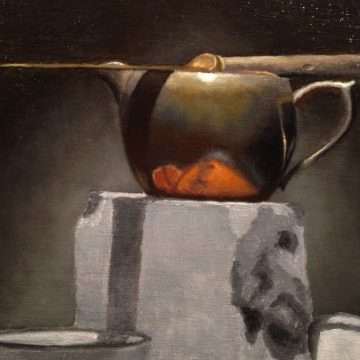
These paintings are created by a process that can take weeks – even months – to complete.
This three stage method – known as the Flemish Technique – has been used by artists for over five centuries to create paintings that can reflect a stunning degree of realism.
First, a drawing is made on the canvas or panel the artist has prepared. This can be a simple outline of forms, but more often contains much of the detail that will be present in the finished painting.
Second, a black and white version is painted over the drawing. Called an underpainting, it allows the artist to understand of the patterns of light and dark as well as create 3-dimensional form – without the complexity of mixing color. In a way, it also serves as a dress rehearsal for the final painting. It must be set aside for a week or two to dry before proceeding.
Finally, a layer of full color is applied on top of the underpainting. This is what you see when looking at a finished painting made in this way.
Even small paintings made using this process can take weeks to complete – longer with larger and more complex paintings. At any given time, there are typically multiple paintings in progress through the three stages.
Once completed, the paintings need additional time to dry – a minimum of one month – before a protective coat of varnish can be applied.
See New Paintings
I show new and available paintings exclusively to my subscribers.
To learn more, click the blue button directly below.